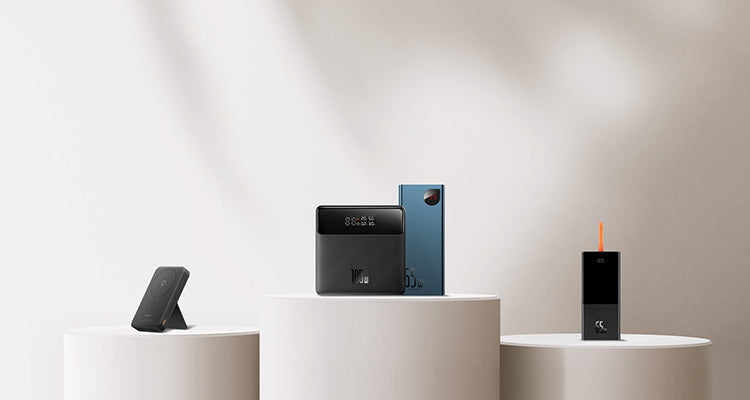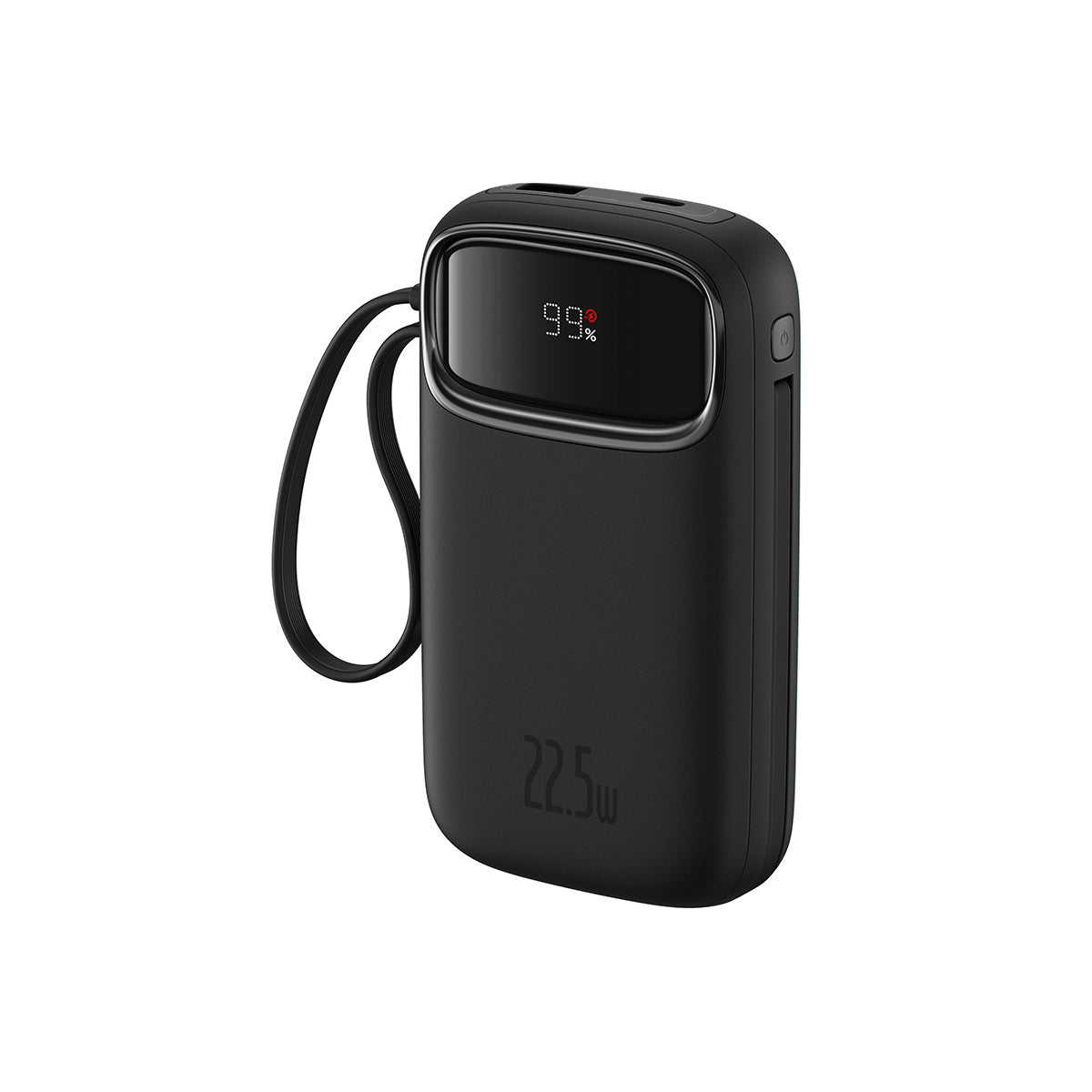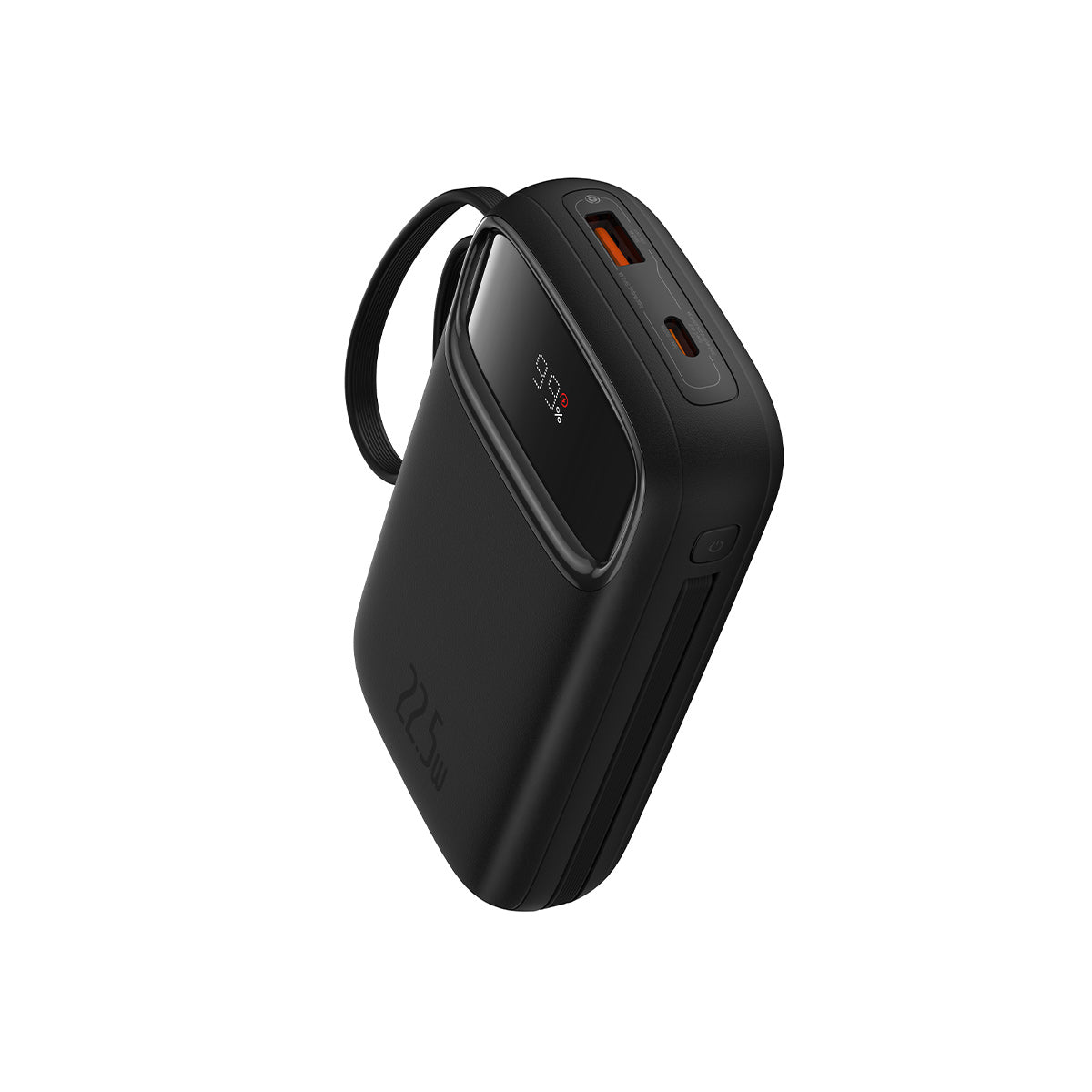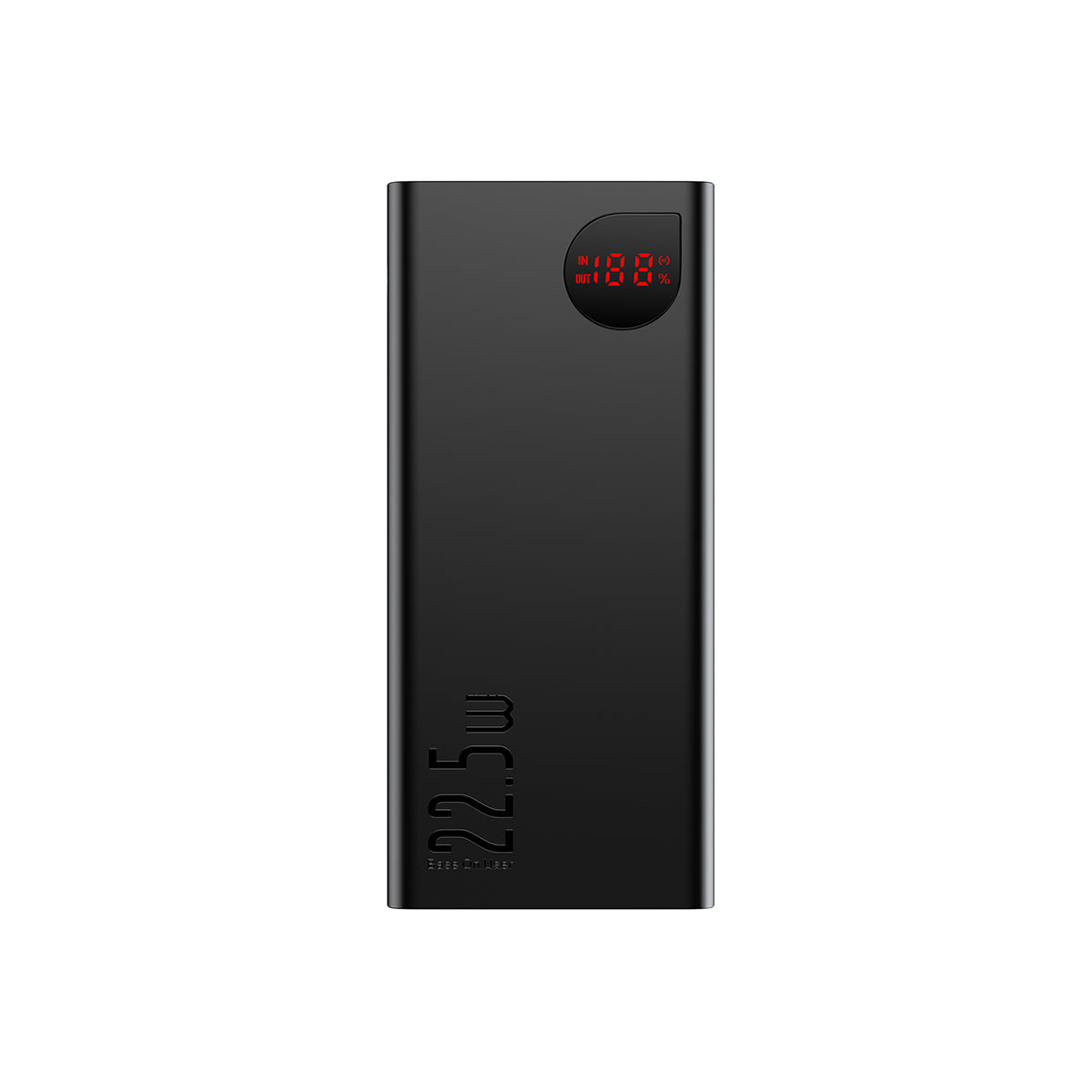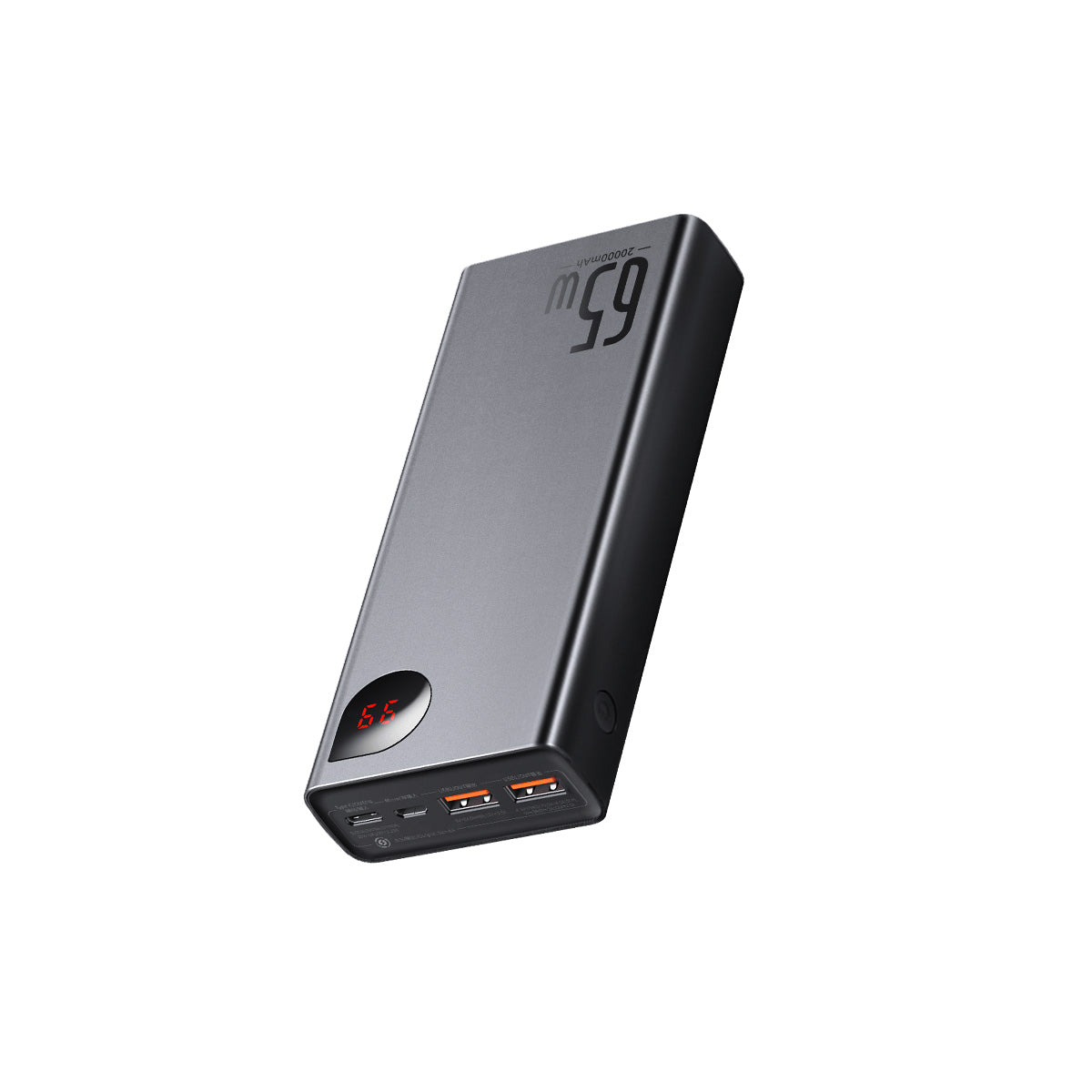Learn More about Power Bank
How to Choose the Right Power Bank?
For a longer trip, you may want to choose a power bank with a higher mAh and wattage. Power banks with higher mAh can last for more charge cycles before needing a recharge themselves. This is especially helpful for trips that have a long travel time where you may not have guaranteed access to wall outlets to power your devices.
We recommend anywhere from 20,000 mAh to 30,000 mAh and 65W to 100W for trips with extended travel time. This level of charging capacity helps give you peace of mind during travel (which is already stressful as it is) and guarantees that you will not have to rely on wall sockets for your devices or for a recharge to your power bank.
For a shorter trip, you may not need as much mAh and wattage in your power bank. We recommend a range of 6000 mAh to 10,000 mAh and 20W to 45W for trips with a shorter travel time. These types of power banks hold plenty of energy to guarantee 1 or 2 full charges to your smartphone without needing to be recharged. That should be plenty of power to get you to your destination and within reach of a wall outlet.
Devices are particularly important during business trips. You may need your phone to link up with colleagues and your computer to get tasks done. For that reason, you may want to choose a power bank that has a high mAh to last multiple charging cycles, and that can power a variety of devices.
We once again recommend a 20,000 mAh to 30,000 mAh and 65W to 100W power bank for business trips. It may also be useful in these cases to have multiple power banks dedicated to each of your devices. Our Baseus Blade Laptop Power Bank has a charging capacity of 20,000 mAh and 100W, making it an excellent source of energy for your laptop while your phone is linked up to another portable charger.
When it comes to parties and small day trips, you will not need a portable charger with a huge charging capacity. We once again recommend a range of 6000 mAh to 10,000 mAh and 20W to 45W. Our Baseus Magnetic Foldable Power Bank, with a 10,000 mAh and 20W capacity, is particularly convenient for parties and other outings thanks to its ability to fold up and be used as a kickstand. Easily stored in your pocket, it utilizes a magnetic connection to secure strongly to your device, providing a fast charge without interrupting your device usage.
All You Need to Know About Power Bank
Power banks allow you to charge your devices on the go. With a power bank in hand, you can juice up and continue to use your devices without worrying whether or not there will be outlets nearby to keep you going.
Power banks, also known as portable chargers, operate in a similar fashion to your bank account, hence their name. They act as a storage facility for energy. You can use the electrical energy stored within your power bank to charge your devices anytime and anywhere. This is largely thanks to a special type of circuit contained within the power bank itself that controls the flow of energy.
The process is really quite simple and consists of 3 parts: energy absorption, energy storage, and energy release.
Before you head out on any excursion, whether it’s a business trip, a day out with friends, or any other instance where you may find yourself without ready access to outlets, charge up your power bank through an external power supply like a wall socket. The energy will be stored within the portable charger in a chemical form, ready to be passed into your device at any moment when it is connected to the charger via an output port.
A fast charging power bank is exactly what its name implies: a portable charger that can juice up your devices at a much faster rate than simple wall chargers. These power banks utilize a higher voltage and essentially increase the number of watts being pumped into your device to charge it up more quickly than average.
Wireless power banks are extremely convenient for those who hate traveling around with tons of wires. Rather than getting all tangled up in wires every time you need to charge your devices, simply rely on a wireless power bank. Though they do require a USB to charge themselves, these handy gadgets have the ability to charge your devices through contact alone, with no wired connection required. Battery cases that attach to the back of your phone are one common example of wireless power banks.
To understand the question, we first need to take a look at mAh. The unit mAh is also known as a milliamp hour, and it refers to the charging capacity of a power bank. It indicates how much energy can be transferred from your power bank to another device over time. And, of course, the higher the mAh of a power bank, the more energy it can provide.
Today’s average smartphone has a battery capacity of 2,800 mAh. With that number in mind, let’s break down the charging output you can expect from these common types of power banks:
- 6000 mAh: 2 full smartphone charges before power bank recharge required.
- 10,000 mAh: About 3.5 smartphone charges before a power bank recharge is required.
- 20,000 mAh: 7 full smartphone charges before power bank recharge is required.
- 30,000 mAh: Nearly 11 full smartphone charges before a power bank recharge is required.
The lifespan of a power bank may vary depending on various factors, such as quality, build, battery capacity, type of battery, and how the power bank is used. The average lifespan range for a power bank may be anywhere from 1.5 to 3 years or 300 to 1000 charge cycles. It’s important to remember that charge cycles are likely the most accurate representation of lifespan. This is because some may use a power bank more frequently than others, making years an inaccurate depiction of the lifespan that does not factor in usage.
To increase the lifespan of your power bank, remember to take good care of it. Here are a few useful tips to help you make the most out of your portable chargers:
- Do not use a power bank to charge your devices above 80%.
- Do not leave power banks in extremely hot or cold temperatures.
- Do not let your power bank reach 0%.
- Do not bring your power bank in contact with liquids of any kind.
With power banks and other types of batteries, the first thing you need to worry about in terms of wattage is the watt-hour. Watt-hours indicate how much energy you can get out of a battery and the rate at which that energy will be transmitted from the power bank to your device.
The second thing to worry about when it comes to wattage in your power bank is the overall energy capacity. Oftentimes, the wattage of a power bank refers to its maximum charging output. This may be higher or lower depending on how the power bank is being used. When used as a means of gaining energy from an external source, the maximum wattage output may be higher than when it is used as a power bank on its own. So, if you used a dual 45W power bank, you might expect the energy output to reach up to 45W when used as a charging station from an external source and up to 30W when used as a standalone power bank.
If you’re wondering how to charge your power bank, we’re here to help you there too. To juice up your portable charger, simply connect it to an external power source like a wall socket, just like you would with your devices. This will allow it to absorb and subsequently store electrical energy to then be transferred to your device of choice later on when needed.




